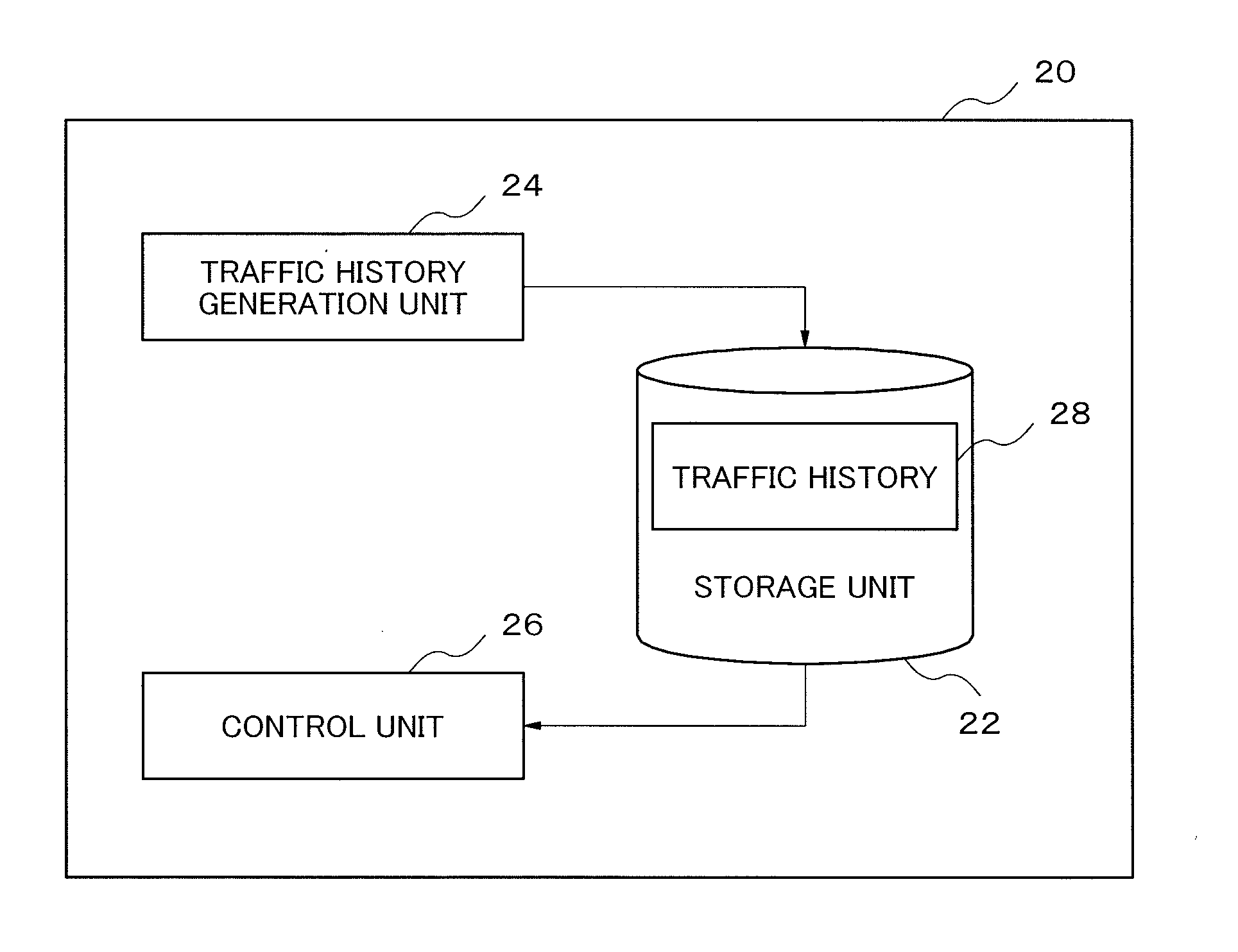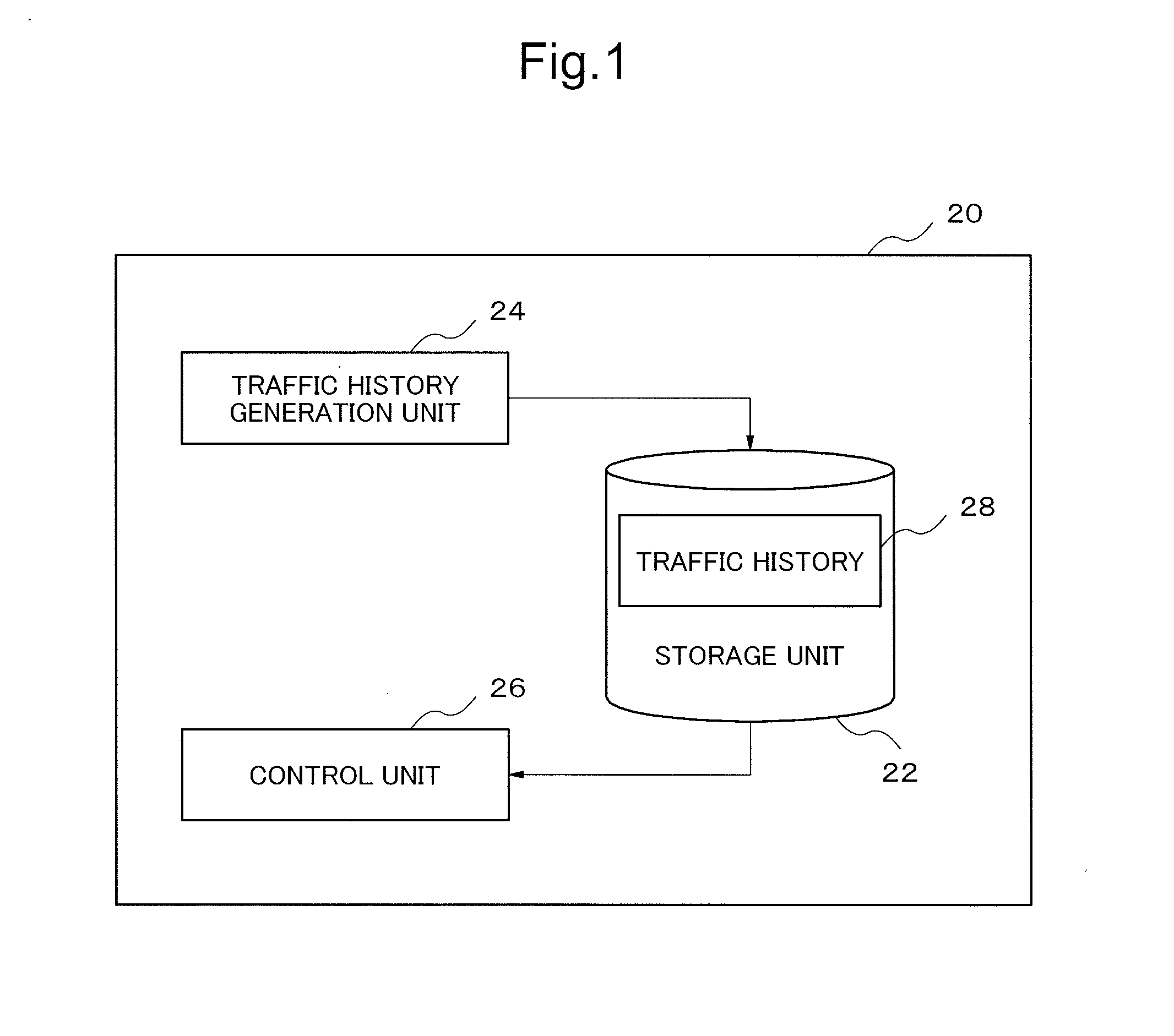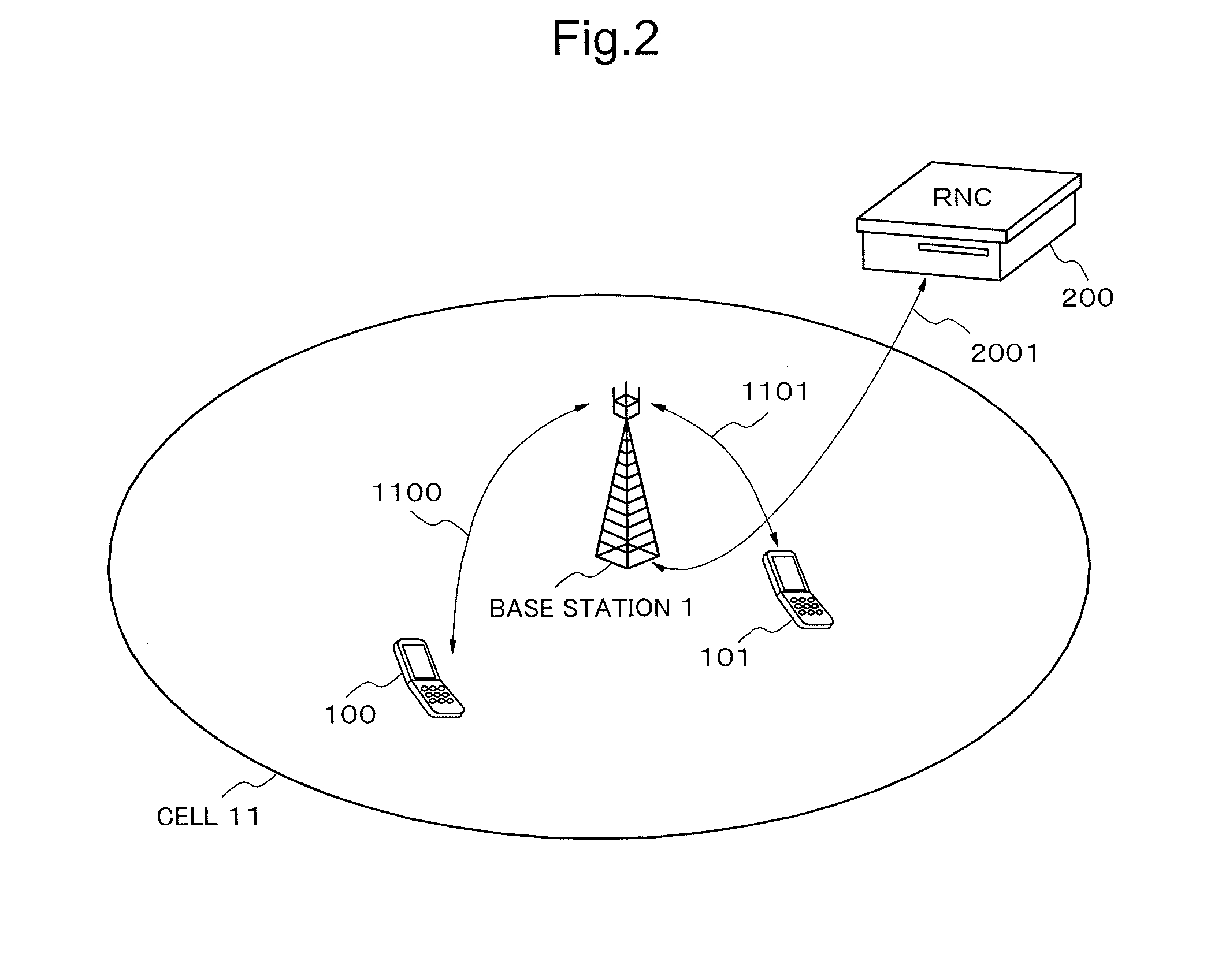Base station, method for controlling base station, control program, and mobile station
- Summary
- Abstract
- Description
- Claims
- Application Information
AI Technical Summary
Benefits of technology
Problems solved by technology
Method used
Image
Examples
first exemplary embodiment
[0045]FIG. 1 is a block diagram for explaining an example of a configuration of a base station 20 according to a first exemplary embodiment of the present invention.
The base station 20 includes a storage section 22, a traffic history generation section 24, and a control section 26. The traffic history generation section 24 measures a traffic of the base station 20 for each unit time and stores it in the storage section 22 as a traffic history 28. The control section 26 controls transmission of a control signal based on the traffic history 28.
[0046]By the way, usually, the base station 20 cannot communicate with a mobile station in a state in which the transmission of the control signal is stopped. Therefore, the base station 20 cannot specify the current traffic of the mobile station located in the vicinity of the base station 20. Accordingly, in such case, generally, a method in which the base station 20 is activated constantly in order to avoid a communication impossible state may...
second exemplary embodiment
[0050]FIG. 2 is a view showing a configuration of an example of a wireless communication system according to a second exemplary embodiment of the present invention. This wireless communication system includes a base station 1, a plurality of mobile stations 100 and 101, and a wireless network control device (hereinafter, referred to as RNC (Radio Network Controller)) 200. The base station 1 transmits the pilot signal to the mobile station located in a cell 11. When the mobile stations 100 and 101 receive the pilot signal, the mobile stations 100 and 101 communicate with the base station 1 through wireless links 1100 and 1101 based on each received pilot signal, respectively. The RNC 200 is connected to the base station 1 through a line 2001 and manages the base station 1. Here, a wired line or a wireless line can be used for the line 2001. In the explanation described below, the wired line is used for the line 2001.
[0051]FIG. 3 is a block diagram for explaining an example of a confi...
third exemplary embodiment
[0084]FIG. 9 is a block diagram for explaining an example of a configuration of a base station 400 of which a wireless communication system according to a third exemplary embodiment of the present invention is composed. A configuration of a control section 402 of the base station 400 is different from the configuration of the control section 362 of the base station 1 of the second exemplary embodiment shown in FIG. 3. This is a difference between the base station 400 of this exemplary embodiment and the base station 1 of the second exemplary embodiment. A configuration and an operation of each of constituent elements other than this control section 402, that are the network communication section 350, the RF section 352, the antenna 354, the reception signal processing section 356, the transmission signal processing section 358, the storage section 360, and the transmission power control section 364 in the base station 400, are the same as those of each of constituent elements other ...
PUM
 Login to view more
Login to view more Abstract
Description
Claims
Application Information
 Login to view more
Login to view more - R&D Engineer
- R&D Manager
- IP Professional
- Industry Leading Data Capabilities
- Powerful AI technology
- Patent DNA Extraction
Browse by: Latest US Patents, China's latest patents, Technical Efficacy Thesaurus, Application Domain, Technology Topic.
© 2024 PatSnap. All rights reserved.Legal|Privacy policy|Modern Slavery Act Transparency Statement|Sitemap



